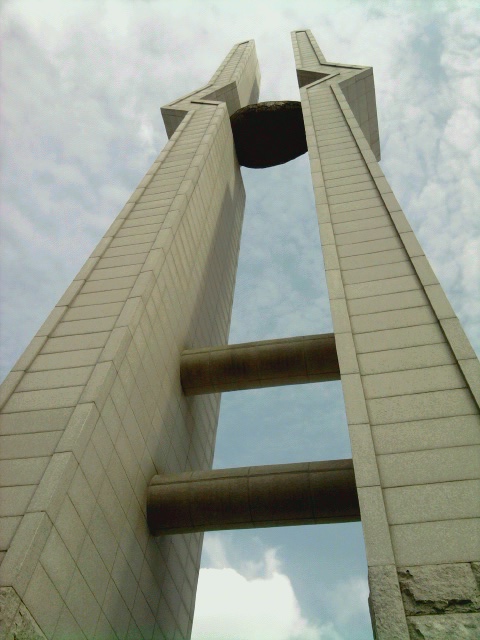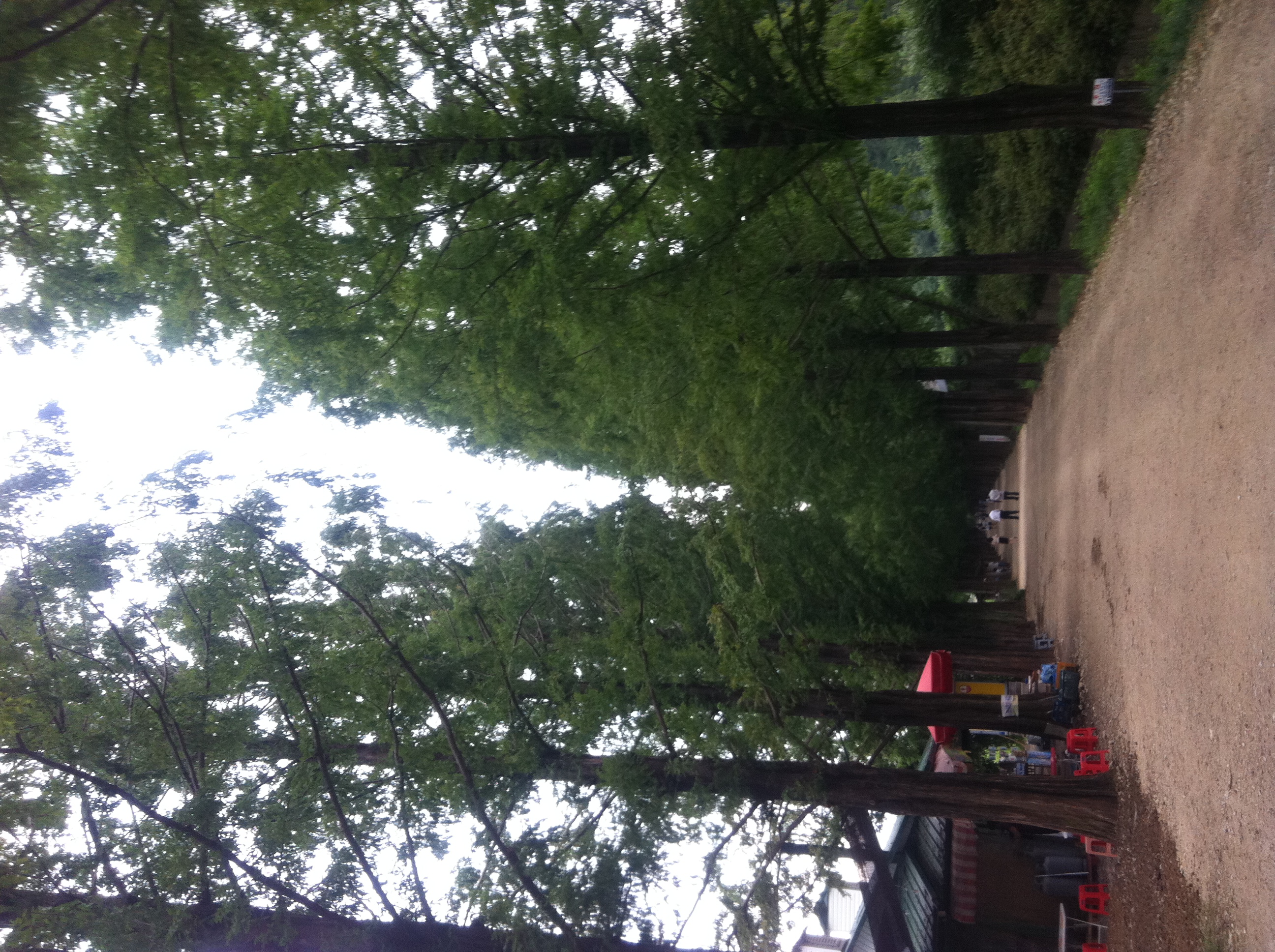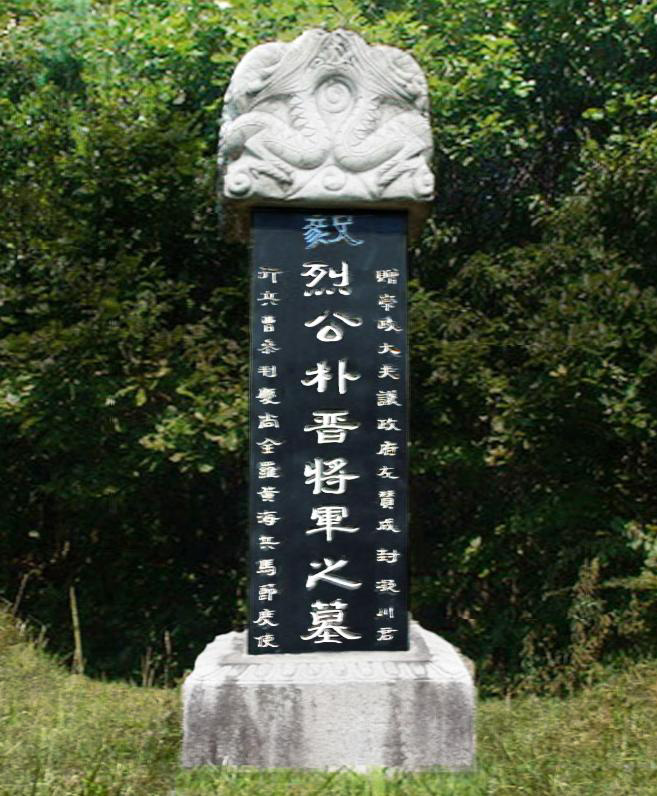|
Righteous Army
Righteous armies (), sometimes translated as irregular armies or militias, were informal civilian militias that appeared several times in Korean history, when the national armies were in need of assistance. The first righteous armies emerged during the Khitan invasions of Korea and the Mongol invasions of Korea. They subsequently rose up during the Japanese invasions of Korea (1592–1598), the first and second Manchu invasions, and during the Japanese occupation and preceding events. During the long period of Japanese intervention and annexation from 1890 to 1945, the disbanded imperial guard, and Confucian scholars, as well as farmers, formed over 60 successive righteous armies to fight for Korean freedom on the Korean peninsula. These were preceded by the Donghak movement, and succeeded by various Korean independence movements in the 1920s and beyond, which declared Korean independence from Japanese occupation. Japanese invasions of Korea The righteous armies were an ... [...More Info...] [...Related Items...] OR: [Wikipedia] [Google] [Baidu] [Amazon] |
History Of Korea
The Lower Paleolithic era on the Korean Peninsula and in Manchuria began roughly half a million years ago. Christopher J. Norton, "The Current State of Korean Paleoanthropology", (2000), ''Journal of Human Evolution'', 38: 803–825. The earliest known Korean pottery dates to around 8000 BC and the Neolithic period began thereafter, followed by the Bronze Age by 2000 BC, Jong Chan Kim, Christopher J Bae, "Radiocarbon Dates Documenting The Neolithic-Bronze Age Transition in Korea" , (2010), ''Radiocarbon'', 52: 2, pp. 483–492. and the around 700 BC. The |
Kim Sŏngil (born 1538)
Kim Sŏngil (; 1538–1593) was a Joseon dynasty politician and ambassador. He was a member of the Eastern faction in the Joseon court. He served as envoy to Japan in a Tongsinsa, along with Ho Song and Hwang Yun-gil in 1590, and met with the Japanese regent, Toyotomi Hideyoshi. He died of disease during the Imjin War. Mission to Japan In 1588, the Taiko of Japan, Toyotomi Hideyoshi, dispatched the Daimyo Sō Yoshitoshi on a diplomatic mission to the Joseon court. So carried a letter informing the Korean king, Seonjo, of Hideyoshi's intention to invade Ming China, and to march his armies through Korea on the way. The Joseon officials decided to bring Japan into the Chinese tributary system by establishing diplomatic relations. Kim Sŏng-il was selected as vice-ambassador, along with Ambassador Hwang Yun-gil, from the Western faction, and fellow Easterner Ho Song as recording secretary. In August 1590, The mission arrived in Kyoto. Hideyoshi did not receive the embassy unt ... [...More Info...] [...Related Items...] OR: [Wikipedia] [Google] [Baidu] [Amazon] |
Gwangju
Gwangju (; ), formerly romanized as Kwangju, is South Korea's list of cities in South Korea, sixth-largest metropolis. It is a designated Special cities of South Korea, metropolitan city under the direct control of the central government's Home Minister. The city was also the capital of South Jeolla Province until the provincial office moved to the southern village of Namak, South Korea, Namak in Muan County in 2005 because Gwangju was promoted to a Special cities of South Korea, metropolitan city and was independent of South Jeolla Province. Its name is composed of the words ''gwang'' () meaning "light" and ''ju'' () meaning "province". Gwangju was historically recorded as ''Muju'' (), in which "Silla merged all of the land to establish the provinces of Gwangju, Ungju, Jeonju, Muju and various counties, plus the southern boundary of Goguryeo and the ancient territories of Silla" in the ''Samguk sagi.'' In the heart of the agricultural Jeolla region, the city is also famous for ... [...More Info...] [...Related Items...] OR: [Wikipedia] [Google] [Baidu] [Amazon] |
Kim Ch'ŏnil
Kim Ch'ŏnil (; 1537 – July 27, 1593) was a Korean military leader in the 16th century. He was a Joseon dynasty official and became a righteous army leader during the 1592–1598 Imjin War. He was killed in the second siege of Jinju in 1593. Early life Kim Ch'ŏnil was born in 1537. He was a good hearted man with a great interest in academics. When Kim was 32 years old, Seonjo of Joseon said that he was upset about not bringing Kim as one of his officials. 5 years later, Kim was recommended to get a job in the government and Kim successfully got one. For years, Kim stayed as one of Seonjo's great officials. Outbreak of war In 1592, Toyotomi Hideyoshi, the Taiko of Japan, invaded Korea with the intent of using it as a route to invade Ming China. His Samurai armies achieved early successes, conquering much of the southern Korean peninsula. Kim Ch'ŏnil, a middle-rank official who was then fifty-five years old, raised a small militia of three hundred men in his hometown of Naju ... [...More Info...] [...Related Items...] OR: [Wikipedia] [Google] [Baidu] [Amazon] |
Naju
Naju (; ) is a city in South Jeolla Province, South Korea. The capital of South Jeolla Province was located at Naju until it was moved to Gwangju in 1895. The name Jeolla Province actually originates from the first character of Jeonju () and the first character of Naju (; nowadays spelled and pronounced 나/''na'' according to the South Korean standard). Dongshin University is situated in Naju. Naju is famous for the Naju Pear which is a large round pear that forms its district logo. History * In the Later Three Kingdoms period of Korean history, Wang Geon (later Taejo of Goryeo Dynasty) occupied the Naju area, which was then part of Later Baekje Kingdom and came to become large base of his political support. He also married the daughter of the Magistrate of Naju, Lady Janghwa, who became the mother of Goryeo's second King Hyejong of Goryeo. * In 1986, the governmental name was changed from Geumseong to Naju. * In 1995, Naju was expanded to include Naju county. Products A ... [...More Info...] [...Related Items...] OR: [Wikipedia] [Google] [Baidu] [Amazon] |
Ko Kyŏngmyŏng
Ko Kyŏngmyŏng (; 1533–1592) was a Joseon scholar and Yangban, ''yangban'', who became a righteous army leader during the 1592–1598 Imjin War. He was killed while attacking Geumsan in 1592.Turnbull, Stephen: ''Samurai Invasion. Japan's Korean War 1592–98'' (London, 2002), Cassell & Co Background Ko was a ''yangban'' from the town of Changhung in Jeolla Province. He had failed the Gwageo, civil service examinations, and was therefore denied a post in the bureaucracy. In 1592, the armies of Japanese regent Toyotomi Hideyoshi invaded Korea. They advanced north from Busan and occupied Seoul, forcing King Seonjo to flee. Ko, then sixty years old, began recruiting civilians into a Righteous Army, righteous army militia. He planned to join forces with another Righteous army led by Cho Hŏn, and recapture Seoul from the Japanese. While on the way to Seoul, he heard that the Japanese were planning to attack Chonju, capital of Cholla, his home province, from the captured city of ... [...More Info...] [...Related Items...] OR: [Wikipedia] [Google] [Baidu] [Amazon] |
Damyang
Damyang County (''Damyang-gun'') is a county in South Jeolla Province, South Korea. Tourism is a major local industry. Notable local products include bamboo goods and strawberries. Damyang is not to be confused with Danyang, which is located in eastern North Chungcheong Province. Geography The county comprises one ''eup'' (Damyang-eup, the seat), and eleven ''myeon'' (Bongsan-myeon, Changpyeong-myeon, Daedeok-myeon, Daejeon-myeon, Geumseong-myeon, Goseo-myeon, Mujeong-myeon, Nam-myeon, Subok-myeon, Wolsan-myeon, Yong-myeon). Mountains Chuwolsan and Byeongpungsan are popular hiking destinations. Also notable for its fortress (Geumseongsanseong): Geumseongsan. Flora Bamboo Damyang is one of the northernmost places where bamboo can be found on the Korean peninsula, and its bamboo forests are well known among Koreans. Many touristic attractions have been created to leverage that reputation: a Bamboo Theme Park / Daenamugol, a Bamboo Museum, a Bamboo Festival, a park ... [...More Info...] [...Related Items...] OR: [Wikipedia] [Google] [Baidu] [Amazon] |
Hashiba Hidekatsu
Hall, John Whitney ''et al.'' (1991). ''The Cambridge History of Japan'', volume 4, p. 115 was a Japanese samurai, also known as Oda Hidekatsu, the fourth son of the famed feudal warlord Oda Nobunaga and was adopted by Toyotomi Hideyoshi at a young age. At the time of Nobunaga's death in 1582, Hidekatsu was at Kojima District, Okayama, Kojima in Bizen Province. Shortly after Nobunaga's death, Hidekatsu assisted Hideyoshi during the Battle of Yamazaki, Hidekatsu and his biological older brother, Oda Nobutaka, were used as a banner of a battle of revenge, and defeated Akechi Mitsuhide. During the funeral of Nobunaga, he held his birth father's mortuary tablet (''ihai''). Afterwards, Hidekatsu received Kameyama Castle (Kyoto), Kameyama Castle in Tanba Province (modern day Kameoka, Kyoto, Kameoka, Kyoto Prefecture). He also served Hideyoshi during the Battle of Shizugatake in 1583 and Battle of Komaki and Nagakute in 1584. Hidekatsu suddenly died in 1586, with many people believi ... [...More Info...] [...Related Items...] OR: [Wikipedia] [Google] [Baidu] [Amazon] |
Kwak Chaeu
Kwak Chaeu (; 1552–1617) was a Korean military general from Uiryeong. He was called the "Red Robe General" () after his habit of wearing a coat made of red silk. In 1592, nine days into the Imjin War, he formed a righteous army to fight against the Japanese army. He originally did not have an official position, but King Seonjo of Joseon granted him a government position. Background Kwak was a ''yangban''. He had passed the examination to enter the civil service when he was thirty-four, but was denied a post as his essay portion was harshly critical of the government. After that, he decided to give up taking the test and stay in hiding for life. Raising an army In 1592, Japanese regent Toyotomi Hideyoshi invaded Korea. Kwak began raising a militia to defend the free parts of Kyongsang province from the invaders. Kwak Chaeu disrupted Japanese supply lines around the Nakdong River in many guerrilla actions. Kwak also had the distinction of winning Korea's first land victory of t ... [...More Info...] [...Related Items...] OR: [Wikipedia] [Google] [Baidu] [Amazon] |
Uiryeong
Uiryeong County () is a county in South Gyeongsang Province, South Korea. Uiryeong County has a population of 27,550 (2019) and is one of the least populated counties in South Korea. History Early history No presence of Neolithic artefacts have been confirmed, however Bronze Age artefacts such as tombstones have been found in the region. The region is thought to have been in the domain of Aragaya (modern day Haman County) and the Bisabeol (modern day Changnyeong County) region, during the Three Kingdoms period in Korea, and is thought to have been under the influence of the Kingdom of Silla, after the province of Haju (下州, 하주) was installed in the region of Changnyeong in 555 (under King Jinheung of Silla). The region was also known as Jangham prefecture (獐含縣, 장함현) under Silla, but the prefecture's name was changed to Uiryeong in 757 (under King Gyeongdeok of Silla), and became kind of a subprefecture under Haman prefecture. The Sinban (新反, 신반) ... [...More Info...] [...Related Items...] OR: [Wikipedia] [Google] [Baidu] [Amazon] |
Fukushima Masanori
was a Japanese ''daimyō'' of the late Sengoku period to early Edo period and served as the lord of the Hiroshima Domain. A retainer of Toyotomi Hideyoshi, he fought in the Battle of Shizugatake in 1583 and soon became known as one of the Seven Spears of Shizugatake, alongside Katō Kiyomasa and others. Biography Fukushima Ichimatsu, was born in 1561, in Futatsudera, Kaitō, Owari Province (present-day Ama, Aichi Prefecture), as the eldest son of the barrel merchant Fukushima Masanobu. However, some sources suggest that Masanobu may have been his father-in-law, with his actual father believed to be Hoshino Narimasa, a cooper from Kiyosu, Kasugai, Owari Province (present-day Kiyosu, Aichi Prefecture). His mother was the younger sister of Toyotomi Hideyoshi's mother, making Hideyoshi his first cousin. As a young man, he served as a page (''koshō'') to Hideyoshi due to the familial connection through their mothers. He first saw battle during the assault on Miki Cast ... [...More Info...] [...Related Items...] OR: [Wikipedia] [Google] [Baidu] [Amazon] |
Pak Chin
Pak Chin (, 25 August 1560 – March 1597), was a Korean Joseon Dynasty Army general and politician. He was a general during the Imjin War. Pak came from the Miryang Pak clan. Battle of Gyeongju During the Imjin War, Pak Chin fought to recapture the city of Gyeongju from the Japanese invaders. His first attack was repelled, but he returned with a mortar and fired a delayed-action bomb over the wall. The Japanese evacuated the city rather than defend it against such mortars. Turnbull, Stephen: ''Samurai Invasion. Japan's Korean War 1592–98'' (London, 2002), Cassell & CoFamily * Grandfather ** Park Ŏn (박언) * Father - Park In-su (박인수, 朴麟壽 ...[...More Info...] [...Related Items...] OR: [Wikipedia] [Google] [Baidu] [Amazon] |




